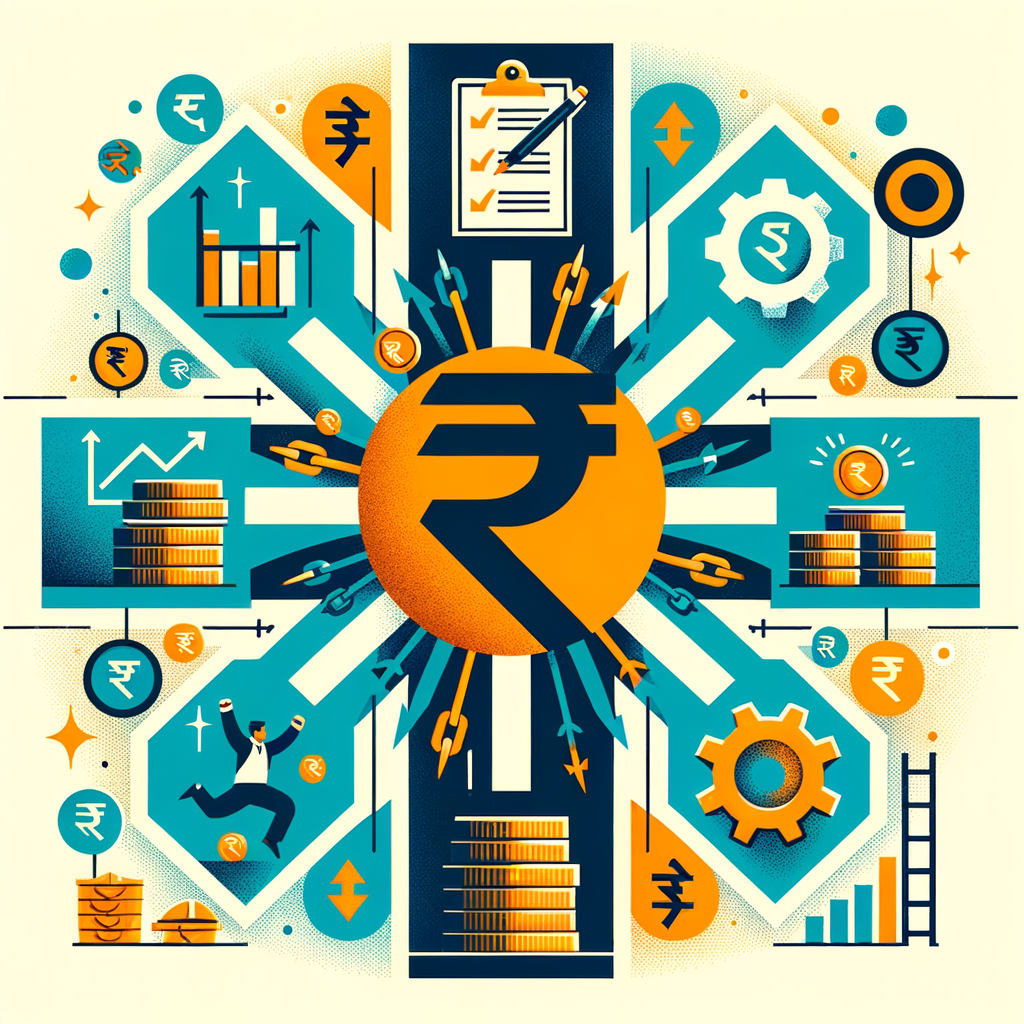Motivational Stories: Real Debt-Free Journey Stories from India
The weight of debt can feel overwhelming. It’s a constant worry at the back of your mind, influencing every financial decision, from buying groceries to planning for the future. For many hardworking Indians, this financial and mental stress is a daily reality. However, breaking free from this cycle is not only possible but incredibly empowering. This post shares real-life debt-free journey stories to offer you a beacon of hope and a practical roadmap to follow. Whether you’re a salaried professional juggling multiple credit card bills or a small business owner managing loans to keep your dream alive, these motivational stories that inspire India will resonate with you. The goal is simple: to show you how others successfully navigated their way out of debt, so you can begin your own journey toward lasting financial freedom.
Why Success Stories of Debt-Free Individuals Matter
The struggle with debt is often a silent one, carried in private. But understanding that you are not alone is the first step toward finding a solution. These stories act as powerful reminders that a debt-free life is within reach for anyone willing to create a plan and stick to it with discipline. They are more than just feel-good tales; they are practical case studies in financial resilience and strategic planning, offering a blueprint you can adapt to your own situation.
The Psychological Burden of Debt in India
In our society, debt carries a significant psychological burden. There’s often a sense of shame or failure attached to it, which can impact mental health, leading to anxiety and stress. This financial pressure influences major life decisions. For a salaried individual, it might mean staying in a job they dislike because they fear income instability. For a small business owner, it can stifle innovation and growth, as every rupee is allocated to servicing loans rather than investing in new opportunities. The constant worry about making payments erodes confidence and can strain relationships, making it a pervasive issue that affects more than just a bank balance.
Finding Hope and a Blueprint in Others’ Journeys
This is where reading about the struggles and triumphs of others becomes so valuable. Hearing about someone who faced a similar, or even worse, financial situation and emerged victorious provides an immediate sense of hope. It shatters the feeling of isolation and proves that recovery is possible. More importantly, these debt-free journey stories in India offer a tangible blueprint. By analyzing the specific steps and strategies others used—how they budgeted, where they cut costs, how they increased their income—you gain a toolkit of proven methods. These are not abstract financial theories; they are real-world applications of discipline and smart decision-making that you can learn from and implement in your own life.
Inspiring Debt-Free Journey Stories from India
Let’s move from theory to reality. The following stories feature fictional but highly realistic characters facing common financial challenges in India. Their journeys showcase the power of a clear plan and unwavering commitment.
Priya’s Story: From Credit Card Debt to Financial Zen (The Salaried Professional)
The Situation: Priya, a bright marketing professional in her late 20s living in Delhi, found herself buried under more than ₹5 lakhs in high-interest debt. A combination of credit cards used to fund a “good” lifestyle, a personal loan for a vacation, and the general pressure of urban living had created a financial storm. She was making minimum payments, but the principal amount barely budged, and the stress was mounting.
The Turning Point: The real wake-up call came when her application for a home loan was flatly rejected. The bank officer pointed to her poor credit-to-income ratio and high-interest liabilities. Staring at the rejection letter, Priya realized her dream of owning a home was impossible unless she drastically changed her financial habits.
The Strategy Breakdown:
- Debt Consolidation: After careful research, Priya took a single, lower-interest personal loan from her bank to pay off all her high-interest credit cards at once. This simplified her payments into one manageable EMI and immediately saved her money on interest.
- The ‘Envelope’ Budget: She adopted a strict digital version of the envelope budgeting system. Using a budgeting app, she allocated every rupee of her salary into categories like ‘Needs’, ‘Wants’, ‘Savings’, and a large ‘Debt Repayment’ fund.
- Side Hustle: To accelerate her journey, Priya leveraged her marketing skills and started taking on freelance content writing projects on weekends. This extra income went directly and entirely towards paying off her consolidation loan.
- Ruthless Prioritization: She made tough but necessary lifestyle cuts. This meant cancelling multiple streaming subscriptions, drastically reducing dining out and ordering in, and implementing a 30-day waiting period for any non-essential purchase over ₹1,000.
The Outcome: Through sheer discipline and a clear strategy, Priya became completely debt-free in just under three years. She not only cleared her loans but also built a healthy emergency fund and is now actively saving for her home loan down payment. Her story is one of the most inspiring debt-free stories for Indians who feel trapped by consumer debt.
Vikram’s Story: Steering a Small Business Out of a Loan Crisis (The Entrepreneur)
The Situation: Vikram, a passionate entrepreneur in Pune, ran a small manufacturing unit. To scale up operations, he took a significant business loan. Unfortunately, his expansion coincided with an unexpected market downturn. Orders dried up, and his cash flow was severely squeezed. He found himself struggling to cover operational costs, supplier payments, and the hefty loan EMI.
The Turning Point: The crisis hit home when Vikram realized he was using his personal savings and even borrowing from family to meet the business’s monthly payroll and operational expenses. The line between his business and personal finances had blurred dangerously, and he knew this path was unsustainable.
The Strategy Breakdown:
- Financial Triage: Vikram immediately sought professional help. He consulted with a financial advisor to get a clear, unbiased picture of his business’s financial health. This helped him understand the root causes of his cash flow problem.
- Renegotiating with Lenders: Instead of hiding from the bank, Vikram proactively communicated his situation. Armed with a revised business plan and cash flow projections, he successfully negotiated a temporary restructuring of his loan, lowering his EMIs for a six-month period to give him breathing room.
- Improving Cash Flow: He implemented stricter credit policies for his clients, shortening payment cycles from 60 days to 30 days. He also introduced a 2% discount for clients who paid their invoices within a week, which significantly improved his cash-on-hand.
- Optimizing Operations: Vikram meticulously reviewed his company’s expense reports and GST filings. This analysis helped him identify several non-essential overheads and operational inefficiencies that he could immediately cut, freeing up more capital for debt repayment. Effective financial management, including Managing Cash Flow Effectively During Tax Season, became his priority.
The Outcome: By taking control of his finances and making strategic decisions, Vikram stabilized his business within a year. Once the market recovered, his leaner, more efficient operation thrived. He not only resumed his original EMI payments but made prepayments, ultimately clearing the entire business loan 18 months ahead of schedule. His journey shows how to become debt-free India for entrepreneurs facing a crisis.
Your Roadmap: How to Start Your Own Debt-Free Journey
Inspired by Priya and Vikram? You can start your own journey today. Financial freedom isn’t about a magic formula; it’s about taking a series of deliberate, logical steps. Here is a clear roadmap to guide you.
Step 1: Face the Numbers – The Debt Audit
You cannot fight an enemy you don’t understand. The first, most crucial step is to get a brutally honest picture of your debt. Take a notebook or open a spreadsheet and list every single debt you have. For each one, write down:
- Creditor: Who you owe the money to (e.g., HDFC Bank, Bajaj Finserv).
- Total Amount Owed: The outstanding principal.
- Minimum Monthly Payment: The EMI you are required to pay.
- Interest Rate (APR): This is the most important number. Find it on your latest statement.
This exercise can be intimidating, but it gives you clarity and a concrete starting point. This is your financial battle map.
Step 2: Create a ‘Debt-Attack’ Budget
A budget isn’t about restriction; it’s about giving your money a purpose. A zero-based budget is particularly effective for debt repayment. Here, every single rupee of your income is assigned a job (Income – Expenses – Savings – Debt Repayment = 0). Track your income and expenses for a month to see where your money is actually going. Once you have that data, create a budget that prioritizes your needs first, then allocates every remaining surplus rupee directly towards your debt repayment. This aggressive approach is what accelerates your journey.
Step 3: Choose Your Weapon – The Repayment Strategy
There are two popular and effective methods for tackling multiple debts. The best one for you depends on your personality. Understanding the nuances of Debt Snowball vs. Debt Avalanche: Which Strategy Is Best for You? is a great next step.
| Strategy | How It Works | Best For |
|---|---|---|
| Debt Snowball | You focus on paying off the smallest debt first, regardless of the interest rate, while making minimum payments on the others. Once the smallest is cleared, you roll that payment amount onto the next smallest debt. | Those who need quick, motivational wins to stay on track. The psychological boost of clearing a debt, however small, can be very powerful. |
| Debt Avalanche | You focus on paying off the debt with the highest interest rate first, while making minimum payments on the others. Once that’s cleared, you target the debt with the next-highest interest rate. | Those who are purely motivated by numbers. This method saves you the most money in interest over the long term. |
Choose the method that you are most likely to stick with. Consistency is more important than picking the “perfect” strategy.
Step 4: Build a Safety Net – The Emergency Fund
This might seem counterintuitive, but before you aggressively attack your debt, you need a small safety net. Life is unpredictable. A medical emergency or an urgent home repair can happen at any time. Without an emergency fund, you’ll be forced to take on new debt to cover these costs, undoing all your hard work. Aim to save a starter emergency fund of ₹15,000 to ₹25,000 in a separate, easy-to-access savings account. Once this is in place, you can confidently direct all your extra cash toward your loans without fear of being derailed. For more on this, consider reading about Building an Emergency Fund While Managing Debt. For more information on building financial stability, you can refer to resources from the Reserve Bank of India’s financial education initiative here.
Conclusion
The path from being in debt to becoming debt-free is a marathon, not a sprint. It is built on the pillars of awareness, a solid plan, and most importantly, consistent discipline. As Priya’s and Vikram’s stories show, financial freedom is not reserved for a lucky few. These debt-free journey stories are powerful proof that with the right mindset and a clear strategy, anyone can overcome their financial challenges and build a secure future. Remember their struggles, learn from their strategies, and believe in your own ability to succeed.
Your own success story is waiting to be written. Take the first step today by listing down your debts and creating a budget. You can do this!
For small business owners, managing finances and compliance is key to avoiding debt. TaxRobo’s accounting and GST filing services can help you maintain financial health and focus on growth. Contact Us Today for a Consultation.
FAQ Section
1. What is the fastest way to get out of debt in India?
There’s no single “fastest” way, as it depends on your income and debt levels. However, the most effective approach is a two-pronged attack: combining the Debt Avalanche method (tackling high-interest debt first to save the most money) with aggressive strategies to increase your income. This could be through a side hustle, freelancing, or negotiating a salary raise at your job. The more money you can throw at your debt, the faster it will disappear.
2. Should I invest my money or pay off debt first?
This is a common question, and the answer lies in comparing interest rates. Generally, if your debt’s interest rate is significantly higher than the potential returns you can reliably earn from investments, paying off the debt should be the priority. For example, credit card debt often has an interest rate of 30-40% per year, which is far higher than most investment returns. It’s financially wiser to clear that first. For low-interest debt like a home loan (8-9%), a balanced approach of investing while paying the EMI can work.
3. Is a debt consolidation loan a good idea?
A debt consolidation loan can be a very good idea, but only under specific conditions. It makes sense if you can get a new loan with a significantly lower interest rate than the average rate of your existing debts (especially credit cards). This simplifies your payments into one EMI and reduces the total interest you pay. The critical part is to commit to not accumulating new debt on the cards you’ve just paid off. Without that discipline, it can lead to an even bigger debt problem.
4. How can I stay motivated during my debt-free journey?
Staying motivated is key. First, track your progress visually. Create a chart or a spreadsheet where you can see your debt balance decreasing each month. Second, celebrate small milestones. When you pay off one credit card or reach a certain savings goal, reward yourself with something small and inexpensive. Finally, keep immersing yourself in positive reinforcement. Regularly read success stories of debt-free individuals and listen to financial podcasts to remind yourself that your goal is achievable and worth the effort.



